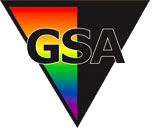
I am an extremely passionate person. When I throw myself into a cause, I dive in head-first and become so involved that you’ll likely never see me again. This is how I am when it comes to the fight for LGBT equality. Every now and then, though, activism gets to be so routine or so enjoyable that I may need a little reminder of why I fight so hard. Each time I reach this point, I think of Matthew Shepard.
Matthew Shepard was a student at the University of Wyoming in the 1990s. He was really just a regular guy, with a mind for activism and a generally optimistic outlook, as well as some inner struggles with depression and peer pressure. You know, a normal twenty-something, just like the rest of us. Matthew also happened to be gay, and like other young gay males, he faced challenges related to his sexuality and discrimination from the bigots in his town.
On October 7, 1998, Matthew Shepard met Aaron McKinney and Russell Henderson at a local bar. After offering Matthew a ride, the two strangers robbed and tortured him before tying him to a fence post outside of Laramie, Wyoming, and leaving him with severe brain trauma. It was another eighteen hours before Matthew was found, and life support sustained him for five more days before he succumbed to his inoperable injuries and passed away on October 12, 1998.
Less than a year later, Matthew Shepard’s murderers were brought to as much justice as the court system can provide for such a heinous act. Matthew is now seen as a martyr for the cause of equal rights and ending discrimination against homosexuals. Songs and films have been written in honor of Matthew, as well as a very popular play entitled “The Laramie Project.” The Matthew Shepard Act (officially called the Local Law Enforcement Hate Crimes Protection Act) has been passed, including sexual orientation as a legally-recognized basis for hate crimes. Matthew’s tragic death has opened many eyes to the plight of the LGBT community, and he is remembered annually on October 12. (This year, the UWF GSA will be holding a candlelight vigil that night on the Cannon Greens.)
While watching the U.S. House of Representatives discuss the Matthew Shepard act on April 29, 2009, via streaming video online, I came to a harsh realization. The speakers spoke at length about Matthew Shepard, as well as of several other young gay men who have been killed in recent years because of their sexual orientation. Each of the cases mentioned featured homosexual victims who were in their late teens or early twenties, male, and generally well-liked. Hearing these cases, I began to draw parallels between the traits of the victims discussed and those of my own friends—the vast majority of whom happen to be young, gay men. Allowing myself to think further on these hard-to-swallow comparisons, I fully realized why I fight so hard to advocate for equal rights and acceptance: I don’t want to live in fear that one day, one of my best friends will be tied to a fence post outside of Laramie, Wyoming.
I’m a bubbly little activist. I put on a smile and use my enthusiasm to educate and advocate in the name of LGBT equality. I fight with compassion and perseverance for the people who make my life worth living. My friends mean the world to me, and the fact that most of them happen to fit into a demographic that has to be protected by hate crimes legislation terrifies me more than they will ever know. I will do whatever is within my power to make sure that Matthew Shepard did not die in vain, and to protect my friends from lethal ignorance and hatred.
For more information on Matthew Shepard and related issues, visit the following websites:
http://en.wikipedia.org/wiki/
http://www.matthewshepard.org/




